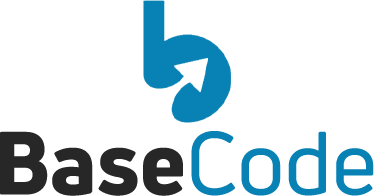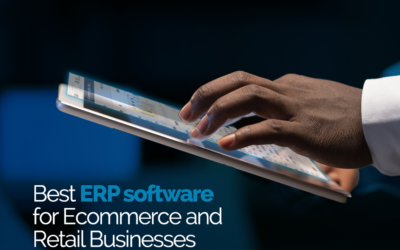Learn how AI and automation are transforming the HR landscape. Understand how technology is revolutionising the way we work, manage our workforce, and create a better workplace

In the not so distant past, Human Resources (HR) was a paper-based department that relied on manual processes for everything from hiring to benefits administration. But with the rise of artificial intelligence (AI) and automation, the HR landscape is rapidly changing. These emerging technologies are transforming the way organizations manage their workforce, from recruitment to performance evaluation.
AI and automation can streamline HR processes, reduce the potential for human error, and free up HR personnel to focus on strategic initiatives. For example, AI can help identify top talent by analysing resumes and identifying key skills and experiences. Automation can also streamline the onboarding process, making it faster and more efficient.
However, the adoption of AI and automation in HR is not without its challenges. It raises questions about privacy, ethics, and job security. Additionally, these technologies are still evolving, and there is a learning curve for HR personnel to implement them in their processes effectively.
Despite the challenges, the benefits of AI and automation in HR are clear. In this blog, we will explore how AI and automation are transforming the HR landscape, the benefits and challenges of implementing these technologies, and the ways in which HR professionals can effectively navigate this shift to maximize its benefits. So, whether you are a HR professional looking to stay ahead of the curve or simply interested in the future of HR, this blog is for you.
How AI And Automation Are Transforming HR
The rise of artificial intelligence (AI) and automation is rapidly changing the HR landscape. These emerging technologies are transforming the way organizations manage their workforce, from recruitment to performance evaluation. AI and automation can streamline HR processes, reduce the potential for human error, and free up HR personnel to focus on strategic initiatives.
One specific use case for AI in HR is talent identification. With the help of machine learning, AI can analyse resumes and identify key skills and experiences to identify top talent quickly and accurately. This can save HR personnel a lot of time and effort, allowing them to focus on other important tasks.
Another area where AI and automation can have a significant impact is in the onboarding process. Automation can streamline the process, making it faster and more efficient. For example, new hires can complete forms and submit documents online, reducing the need for paperwork and manual data entry.
The potential impact of these technologies on workforce management is immense. Increased efficiency and accuracy can lead to significant cost savings and improved productivity. In addition, by leveraging the power of data analytics, organizations can gain valuable insights into their workforce, such as identifying areas where additional training is needed or where processes can be optimised.
However, the adoption of AI and automation in HR is not without its challenges. It raises questions about privacy, ethics, and job security. Additionally, these technologies are still evolving, and there is a learning curve for HR personnel to implement them in their processes effectively.
The use of HR tech like AI and automation is transforming the HR landscape. By leveraging the power of these emerging technologies, organizations can optimize their workforce management processes and stay ahead of the curve in today’s digital transformation era.
Benefits of AI and automation in HR
Incorporating AI and automation in HR processes can provide significant benefits for organizations. Here are some of the key advantages:
Efficiency: With automation, tasks such as onboarding, data entry, and benefits administration can be streamlined, reducing the time and effort required from HR personnel. This allows them to focus on more strategic initiatives, such as employee engagement and talent management.
Improved decision-making: By leveraging machine learning and data analytics, HR leaders can make data-driven decisions regarding everything from employee retention to performance evaluation. This can lead to better outcomes for the organization as a whole.
Enhanced employee experience: AI-powered tools can help identify the needs and preferences of individual employees, leading to more personalized experiences. For example, chatbots can be used to answer employee questions, reducing the need for manual support.
Increased accuracy: Automation can reduce the potential for human error, resulting in more accurate data and processes. For example, AI can be used to analyse resumes and identify top talent more accurately.
Cost savings: By automating repetitive tasks, HR departments can reduce their reliance on manual labour, potentially reducing costs associated with payroll and benefits administration.
Several companies have successfully implemented AI and automation in their HR processes, including Unilever and IBM. Unilever uses AI to help identify top talent and provide personalized learning and development opportunities for employees. IBM uses automation to streamline HR tasks such as onboarding and payroll, freeing up HR personnel to focus on more strategic initiatives.
By embracing these technologies, organizations can improve HR processes, enhance the employee experience, and gain a competitive edge. As HR technology continues to evolve, it will be important for HR leaders to stay up-to-date on the latest developments and take advantage of new tools to drive organizational success.
Navigating the shift to AI and automation in HR
As HR professionals navigate the shift to AI and automation, there are several best practices they can follow to ensure a smooth transition. First, it’s important to understand the limitations of these technologies and use them in conjunction with human intelligence. HR leaders should prioritise training and upskilling employees to work alongside AI and automation, rather than fearing replacement.
Additionally, as an HR professional you should prioritise data analytics in your decision-making process. By leveraging data insights, you can make more informed decisions and improve the accuracy of HR operations.
Ethical considerations should be top of mind. HR leaders should be transparent with employees about how their data is being used and ensure that AI and automation are being used in a fair and unbiased way.
It’s important for HR professionals to approach the adoption of AI and automation with a strategic mindset, rather than simply implementing these technologies for the sake of keeping up with trends.
By prioritising training, data analytics, and ethical considerations, HR leaders can effectively navigate the challenges of implementing AI and automation while maximising its benefits for the organization and its employees.
Conclusion
As we have seen throughout this article, the use of AI and automation in HR has the potential to transform the way organizations manage their workforce.
We can use new technology to streamline processes, reduce errors, and allow HR personnel to focus on more strategic initiatives. However, there are also challenges to adopting AI and automation in HR, such as ethical considerations and job displacement.
To navigate this shift effectively, HR professionals must stay informed about the latest technologies and best practices. They must also take a strategic approach to implementing these tools, while also considering the potential impact on their employees.
At Basecode Tech, we specialise in helping companies navigate the complex world of digital transformation, including the adoption of new technologies in HR. Our team of experts can help you identify the right HR technology solutions for your organization and support you through the implementation process.
Contact us now and let’s help you get started.




0 Comments